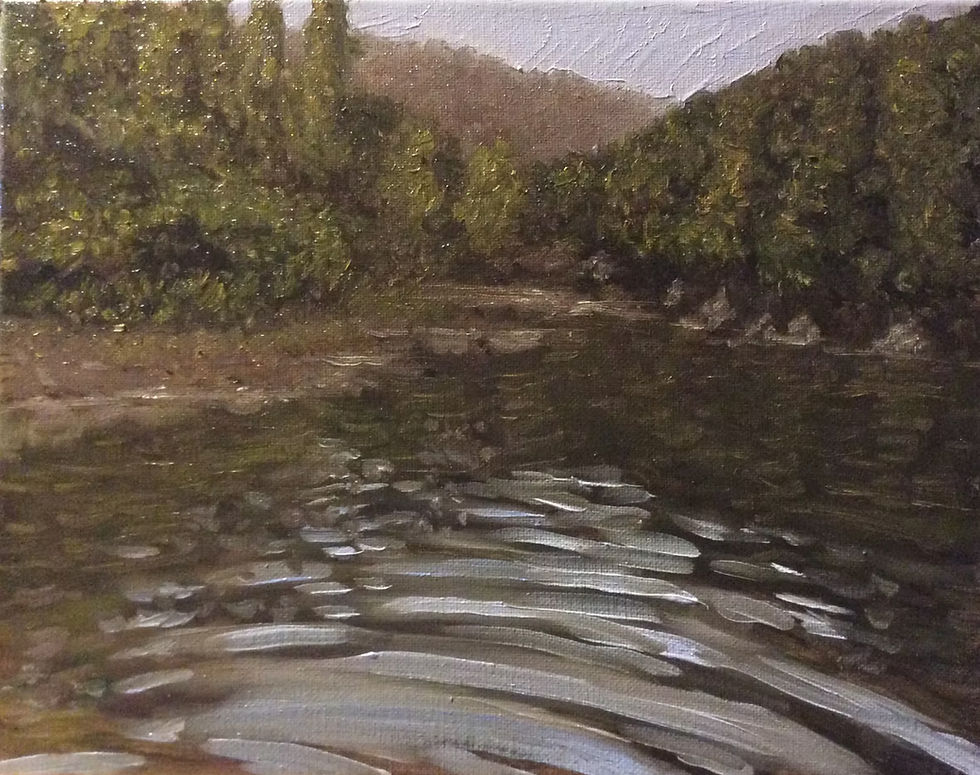The Depiction of Light in Paintings is Kind of Like Music in Film
- tmichaelniemanart

- Dec 20, 2024
- 4 min read

Painting and music are two forms of creative expression that, though distinct, share remarkable parallels in how they evoke emotion and shape perception. Just as music in a film guides the viewer’s emotional journey and enriches the storytelling, the depiction of light in a painting plays a similar role, influencing mood, directing focus, and adding depth to the visual narrative. Light in painting is not merely a technical element; it is a language, as essential to the artwork as a film score is to cinema.
Setting the Mood: Emotional Resonance
In film, music sets the emotional tone of a scene. A soaring orchestral score can heighten feelings of triumph, while a haunting melody underscores tension or sorrow. Similarly, the treatment of light in a painting determines its mood and atmosphere. A soft, diffused light creates a sense of tranquility, akin to a gentle lullaby. In contrast, dramatic chiaroscuro—an interplay of intense light and deep shadow—evokes mystery or intensity, much like a suspenseful musical score.
“Nature is so powerful, so strong. Capturing its essence is not easy – your work becomes a dance with light and the weather. It takes you to a place within yourself.” – Annie Leibovitz
Consider the works of Rembrandt, whose mastery of light transformed simple portraits into profound emotional experiences. The light in his paintings acts as a storyteller, highlighting expressions, gestures, and textures. Similarly, in film, a score often acts as the invisible narrator, guiding the audience’s emotions without them even realizing it.
Guiding Focus: Spotlighting the Subject
In both paintings and films, the audience’s attention must be directed. A movie score can cue viewers to focus on an unfolding event—a sudden swell of violins might signal the importance of a moment or character. Likewise, light in a painting serves as a visual cue, drawing the eye to key elements.
In Vermeer’s *Girl with a Pearl Earring*, the soft light falling on the girl’s face and earring immediately directs attention to her enigmatic expression. This deliberate use of light functions much like a film score’s crescendo, emphasizing what the creator wants the audience to feel or notice. Without these guiding elements, both the painting and the movie might lose their impact, leaving the audience adrift.
“To love beauty is to see light.” – Victor Hugo
Creating Depth: The Illusion of Space and Time
Music in film often gives a sense of temporal depth, expanding the narrative beyond the immediate visuals. A melancholic piano piece can suggest untold backstories or future consequences, enriching the cinematic experience. Similarly, light in a painting provides spatial depth and dimension, turning a flat surface into a vivid, three-dimensional world.
The Impressionists, like Claude Monet, demonstrated this brilliantly. Monet’s depictions of sunlight shimmering on water in “Impression, Sunrise” do more than represent a scene—they transport the viewer into the moment, allowing them to feel the play of light and air. This effect parallels how music can immerse a film viewer, making them feel the weight of a scene’s emotions or the expanse of its universe.
Subconscious Responses
Both light in painting and music in film work on a level that is often subconscious, affecting the viewer or listener without overt awareness. In a movie, dissonant chords might evoke unease before a viewer consciously recognizes the tension on screen. Similarly, the subtle gradations of light and shadow in a painting can create feelings of warmth, foreboding, or melancholy without the viewer pinpointing why.
“In the right light, at the right time, everything is extraordinary.” – Aaron Rose
In Edward Hopper’s “Nighthawks” the stark, artificial light spilling from the diner creates a sense of isolation despite the shared space of the characters. The viewer might not immediately articulate the role of the light, but its emotional impact is undeniable—much like how an eerie, ambient soundtrack shapes the mood of a suspenseful film.
The Art of Silence and Shadow
Just as silence is a powerful tool in film music, darkness and shadow hold immense power in painting. Silence in a movie score can heighten tension or provide a moment of reflection, making the eventual return of music more impactful. In painting, the absence of light—shadow—can similarly create drama, mystery, or emphasis.
“I find the light and work it, work it, work it.” – Janice Dickinson
Caravaggio’s dramatic use of tenebrism*(extreme contrasts of light and dark) in works like “The Calling of Saint Matthew” demonstrates the potency of shadow. The areas of darkness make the illuminated parts even more striking, much like a sudden burst of music after a moment of silence in a film grips the audience’s attention.
A Symphony of Light and Sound
The interplay of light in painting and music in film reveals how these two art forms, though different in medium, share a profound similarity in their capacity to move, guide, and inspire. Both light and music transcend their technical functions to become storytelling tools, shaping the audience’s experience in ways that linger long after the final scene or brushstroke.
Just as a film without music might feel flat or incomplete, a painting without the thoughtful depiction of light risks losing its vitality and impact. Together, these elements remind us of the universal language of art—where sight and sound converge to touch the soul.
Artists who work from direct observation have but one job: depict the way light falls upon plains within a scene in ways that make it both believable and interesting.
“The substance of painting is light.” – Andre Derain
Thanks for checking out my work and for hearing me out.
-Cheers!
*Tenebrism is a term derived from the Italian 'tenebroso' which means darkened and obscuring. It is used to describe a certain type of painting in which significant details such as faces and hands are illuminated by highlights which are contrasted with a predominantly dark setting.



Comments